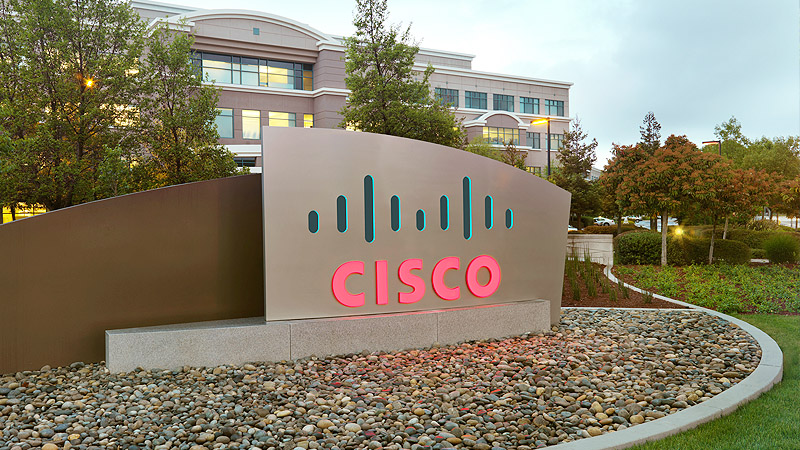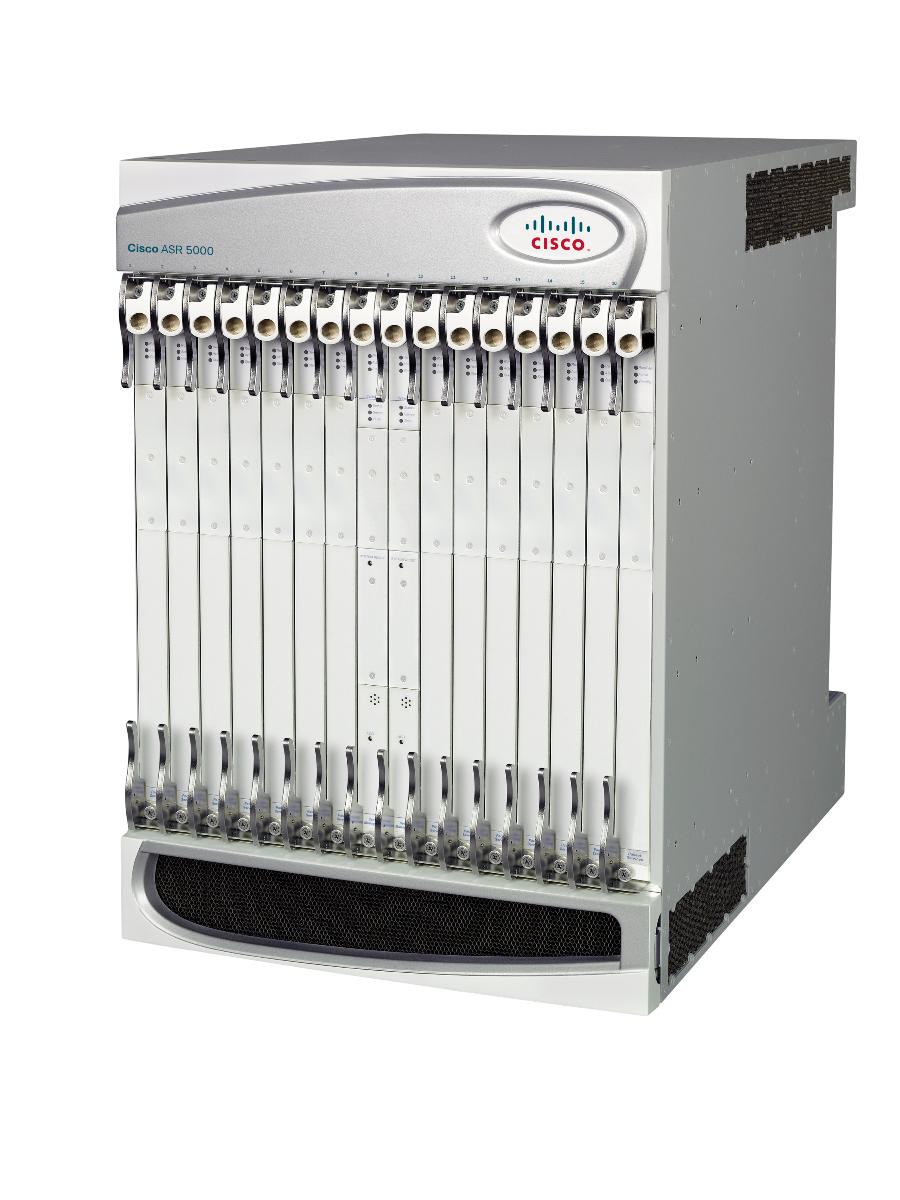BARCELONA, SPAIN – Feb. 25, 2014 – At the GSMA Mobile World Congress 2014, Cisco today announced that its Cisco Quantum™ Virtualized Packet Core (Quantum vPC), a software solution of the new Cisco Evolved Services Platform that virtualizes key capabilities of the Cisco® Aggregation Services Router (ASR) 5000 Series, has passed portability testing with Berlin-based European Advanced Networking Test Center (EANTC). This first-of-a-kind functionality test emphasized that leading mobile Internet intelligence capabilities can be extended by service providers in their networks and allow them to offer a range of new services such as machine-to-machine (M2M) and sponsored data.
The thorough EANTC functionality tests involved LTE (4G) and 3G radio-access technologies using IPv4 and IPv6 and simulating the equivalent of 10,000 end users. The EANTC tests confirmed that the virtualized and physical evolved packet core (EPC) solution that supports the same features and functions as the Cisco Quantum vPC is completely hypervisor and hardware independent. The tests also confirmed that the Cisco Quantum vPC uses the same management software and interface that supports integrated services, such as network address translation, firewall and deep packet inspection.
“With all the discussions about virtualization in the industry these days, it is nice to see a vendor ready for independent verification,” said Carsten Rossenhövel, EANTC managing director. “We were able to verify Cisco’s claims that their new virtualized packet core is based on the same Cisco StarOS code and provides the same look and feel as their Cisco ASR 5000 Series.”
EANTC also confirmed that the same LTE (4G) and 3G calls that are supported by the Cisco ASR 5000 Series are also supported by the virtual implementation and verified that functions such as high availability with session recovery, deep packet inspection and firewall/ network address translation worked as expected in the Cisco Unified Computing System™-based virtual implementation.
Such capabilities means that more than 300 service providers running the Cisco ASR 5000 Series can bypass the information technology integration costs normally associated with migration to a virtual environment, and simply extend the same code, functions and services to virtual implementations while continuing to work in a near seamless fashion with existing and new Cisco ASR 5000 Series infrastructure.
The full EANTC report is now available for downloading here.
There are several advantages of combining physical and virtual environments. Virtual brings a lower entry cost, flexible deployment models and rapid time-to-market to enter multiple new markets like M2M or private mobile broadband (PMB), while physical brings carrier-grade performance and greater capacity. Service providers benefit from an agile hybrid environment in order to flex and grow to any combination of a market requirement.
Service Provider Customers Acceptance
With six times more network elements and applications virtualized than all major network competitors combined and orchestrated elements across wide-area network (WAN), data center and access technologies, Cisco is leading service providers at their own pace into virtualization.
Global service providers, including Osnova Telecom in Russia and Thales in France, are recognizing the importance of using intelligent networks that are flexible to deliver new experiences and expand revenue opportunities.
- “Creating federal LTE network in Russia, Osnova Telecom uses the most modern and effective solutions. We consider Cisco ASR 5000 Series as one of the most robust and elastic programmable network platforms available today. We trust Cisco and know that its packet core technologies work. We do not have to do a forklift upgrade to install the Cisco Quantum Virtualized Packet Core solution, which ensures that we have the ability to launch next-generation 4G LTE and provide high quality of service to our customers,” said Mikhail Petrov, CEO, Osnova Telecom.
- “Our Security and Defense Market is willing to leverage 4G technology to bring advanced applications to the field and improve operational efficiency. Nexium Wireless, Thales 4G mission-critical solution, delivers adapted 4G services to our customers with the right level of resilience and security. Nexium Wireless resilient [innovative] architecture is powered by Cisco Premium Mobile Broadband Solution. Partnering with Cisco has enabled Thales with a unique opportunity to bring the LTE technology quickly to the security and defense markets,” said Jean-Michel Lagarde, SVP, deputy, Secure Communications & Information Systems, Thales.
At a time when other vendors are offering initial demonstrations of their first isolated virtual products, Cisco has already deployed its integrated virtualized solution at several high-profile public events, such as the Republican and Democratic national political conventions and the National Football League’s annual Super Bowl.
As part of its service provider virtualization approach, Cisco does not see network functions virtualization (NfV) or software-defined networking (SDN) as isolated developments, but rather as part of the broader Cisco Evolved Services Platform, a comprehensive unified virtualization and orchestration software platform that creates, automates and provisions services in real time, across compute, storage and network functions, to deliver desired business outcomes for applications running across multiple domains.
Using a catalog of virtual functions such as the Cisco Quantum vPC and working in conjunction with the infrastructure, the Cisco ESP help ensure the right type of experience for end users regardless of how or where they connect to the network (e.g., fixed, mobile, Wi-Fi). It represents a fundamental shift in the way service providers’ networks will be built and can result in significant operational cost savings through advanced automation capabilities and new revenue-generating opportunities from being able to personalize services.
Supporting Quote
- Kelly Ahuja, senior vice president and general manager, Service Provider Mobility Business Group, Cisco
“Cisco is fully committed to virtualizing our service provider networking technologies where and when it makes sense for our customers. We will help lead the industry and give service providers the flexibility they need to deliver with the physical Cisco ASR 5000 Series, providing the horsepower and capabilities needed today, and the flexibility and scalability service providers need with virtualization in the future.”
Supporting Video
- View video: "Changing the Game at a National Security Event"
Supporting Resources
- EANTC
- View Cisco Expands Virtualization Offerings for Service Providers social media release
- Read blog Series: Cisco at MWC 2014 at Cisco SP360 Blog: http://blogs.cisco.com/sp
- Follow Cisco at MWC 2014 news and activities on Twitter @CiscoSPMobility and use hashtag #CiscoMWC
- Follow us on our LinkedIn page for targeted updates and announcements
- Please keep up-to-date with white papers, presentations and infographics at: Cisco Service Provider SlideShare presentations.
- Visit us at: Cisco Service Provider Mobility Community
- Subscribe to Cisco's SP360 feed
Tags/Keywords
Cisco, Cisco Quantum, Quantum, virtualized packet core, Quantum vPC, Osnova Telecom, Thales Group, EANTC, mobility, mobile Internet, virtualized, NfV, network functions virtualization, software-defined networking, SDN, routing, switching, Aggregation Services Router, ASR, ASR 5000, Visual Networking Index, VNI, software, hardware, service providers, mobile operators, 3G, 4G, Wi-Fi, LTE
RSS Feed for Cisco: http://newsroom.cisco.com/dlls/rss.html
About Cisco
Cisco (NASDAQ: CSCO) is the worldwide leader in IT that helps companies seize the opportunities of tomorrow by proving that amazing things can happen when you connect the previously unconnected. For ongoing news, please go to http://thenetwork.cisco.com.
# # #
Cisco and the Cisco logo are trademarks or registered trademarks of Cisco and/or its affiliates in the U.S. and other countries. A listing of Cisco's trademarks can be found at www.cisco.com/go/trademarks. Third-party trademarks mentioned are the property of their respective owners. The use of the word partner does not imply a partnership relationship between Cisco and any other company.




